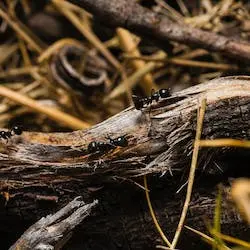
Level 1:
The CDC warns that mpox could come back soon because of social activities. Mpox is a rare virus that can be passed to people from infected animals. If you get mpox, you might feel tired and have a fever. A rash might also show up on your skin. It’s not easy to spread mpox, but if people don’t wash their hands or wear a mask, it could go from one person to another. We need to stay safe and take care of ourselves by washing our hands and being careful not to touch sick people or animals.
Level 2:
The Centers for Disease Control and Prevention (CDC) have issued a warning that mpox may reappear soon because of social activities. This rare virus is transmitted to humans from infected animals, like mice and monkeys. If someone gets mpox, they might feel tired and experience symptoms like fever, headaches, muscle aches, backaches, enlarged lymph nodes, chills, and rashes. Although mpox is not highly contagious, it can spread from person to person through respiratory droplets or contact with infected skin lesions or bodily fluids. It’s important to stay safe by washing your hands frequently, avoiding contact with ill people or animals, and wearing masks in crowded indoor settings. Let’s take basic precautions to protect ourselves and others so we can prevent the spread of this disease.
Full Story:
The Centers for Disease Control and Prevention (CDC) issued a warning about the possibility of a mpox reappearance in the coming months. The CDC noted social activities and gatherings during the spring and summer seasons as probable contributing causes. Although new instances of the virus have been steadily declining since its peak in August, health officials are afraid that this trend could be reversed if necessary safeguards are not followed. Stay safe everyone!
Mpox, or monkeypox, is a rare viral disease that is transmitted to humans mostly by contact with infected animals like mice and monkeys. The disease was first identified in humans in the Democratic Republic of the Congo in 1970, and it has since been confirmed in a number of African countries, as well as the United States, China, Russia and other parts of the world.
Human mpox symptoms include fever, headache, muscle aches, backache, enlarged lymph nodes, chills, and weariness. A rash commonly develops on the face and spreads to other parts of the body. The illness usually lasts two to four weeks and can be severe in some cases, particularly in someone with a weakened immune system.
While mpox is not a highly contagious disease, it can be spread from person to person through respiratory droplets (like COVID) or contact with infected skin lesions or other bodily fluids. Social gatherings and activities can become potential hotspots for transmission if adequate hygiene and safety protocols are not maintained.
The newest mpox outbreak in the Chicago region serves as a reminder of the disease’s pervasiveness. Health experts advise individuals to wash their hands frequently, avoid contact with ill people or animals, and wear masks in crowded indoor settings to help prevent the infection from spreading.
In addition to these specific safeguards, public health officials are working to monitor and limit the spread of mpox on a larger scale. Tracking and limiting outbreaks, educating healthcare practitioners and the general public about the disease, and discovering viable therapies and vaccinations are all part of the plan.
Despite these efforts, the risk of mpox return in the next months emphasizes the ongoing need for alertness and preparedness. This entails stockpiling personal protection equipment and other medical resources, as well as remaining current on the latest developments and health officials’ directives.
As we negotiate the current COVID-19 epidemic, it is critical not to disregard the threat posed by other infectious diseases like mpox. We can help prevent the spread of this disease and keep our communities safe and healthy by taking basic precautions to protect ourselves and others.
Questions:
What is mpox, and how is it transmitted to humans?
What are the symptoms of mpox, and how long does the illness usually last?
What precautions can individuals take to protect themselves from mpox, and how effective are these measures?
In your opinion, do you think people should be more concerned about mpox or COVID-19? Why or why not?
How can public health officials work to monitor and limit the spread of mpox on a larger scale?
Fill in the Blanks:
educating, developments, trend, headache, protocols, rash, weariness, outbreaks, hotspots, viable, steadily, Russia, chills, adequate, stockpiling, safeguards, backache, rare, preparedness, declining, contact, hygiene, fever, reappearance, China, symptoms, transmitted, peak, CDC, therapies, practitioners, alertness, gatherings, reversed, vaccinations
The Centers for Disease Control and Prevention (________) issued a warning about the possibility of a mpox ________ in the coming months.
The CDC noted social activities and ________ during the spring and summer seasons as probable contributing causes.
Although new instances of the virus have been ________ ________ since its ________ in August, health officials are afraid that this ________ could be ________ if necessary ________ are not followed.
Mpox, or monkeypox, is a ________ viral disease that is ________ to humans mostly by ________ with infected animals like mice and monkeys.
The disease was first identified in humans in the Democratic Republic of the Congo in 1970, and it has since been confirmed in a number of African countries, as well as the United States, ________, ________ and other parts of the world.
Human mpox ________ include ________, ________, muscle aches, ________, enlarged lymph nodes, ________, and ________.
A ________ commonly develops on the face and spreads to other parts of the body.
Social gatherings and activities can become potential ________ for transmission if ________ ________ and safety ________ are not maintained.
Tracking and limiting ________, ________ healthcare ________ and the general public about the disease, and discovering ________ ________ and ________ are all part of the plan.
Despite these efforts, the risk of mpox return in the next months emphasizes the ongoing need for ________ and ________.
This entails ________ personal protection equipment and other medical resources, as well as remaining current on the latest ________ and health officials’ directives.
Vocabulary:
Centers for Disease Control and Prevention (CDC) - a national public health agency in the United States
reappearance - the act of appearing again after a period of absence
social activities - events or occasions where people gather and interact with each other
gatherings - events or meetings where people come together in one place
spring and summer seasons - the time of year when spring and summer occur, typically from March to August
contributing causes - factors that contribute to a particular outcome
steadily - consistently, without much fluctuation
declining - decreasing, becoming less
peak - the highest point or level
health officials - professionals responsible for managing and monitoring public health
trend - a general direction in which something is developing or changing over time
reversed - changed to the opposite or back to a previous state
safeguards - measures taken to protect against potential harm or danger
rare - not occurring very often or not common
viral disease - an illness caused by a virus
transmitted - passed on from one person or animal to another
infected animals - animals that have contracted a disease
Democratic Republic of the Congo - a country located in Central Africa
confirmed - verified or established as true or accurate
African countries - nations located on the continent of Africa
China - a country located in East Asia
Russia - a country located in Northern Eurasia
symptoms - indications of a disease or condition experienced by an individual
fever - a high body temperature
headache - a pain or discomfort in the head
muscle aches - soreness or discomfort in the muscles
backache - pain or discomfort in the back
enlarged lymph nodes - swollen glands in the neck, armpit, or groin
chills - feelings of coldness or shivering
weariness - a feeling of tiredness or fatigue
rash - a widespread outbreak of red bumps or spots on the skin
contagious disease - a disease that can be spread from person to person
respiratory droplets - small particles that are released when an infected person talks, coughs, or sneezes
contact - direct touch or physical interaction
bodily fluids - liquids produced by the body, such as blood, urine, and saliva
hotspots - places where an infection is likely to spread rapidly
adequate - sufficient or satisfactory for a particular purpose
hygiene - practices or conditions conducive to maintaining health and preventing disease
protocols - established procedures or guidelines for a particular situation or activity
outbreaks - sudden occurrences or clusters of cases of a disease in a particular place or time
educating - providing information and knowledge about a particular subject
practitioners - professionals who practice in a particular field, typically healthcare
viable - capable of working effectively; feasible
therapies - treatments or methods used to alleviate symptoms or cure a disease
vaccinations - injections or oral medications that provide immunity against a particular disease
alertness - being aware and vigilant
preparedness - readiness or ability to deal with a particular situation or event
stockpiling - accumulating and storing large quantities of something
personal protection equipment - gear or clothing worn to protect against potential hazards or infections
medical resources - materials or tools used to treat or manage medical conditions
developments - new advancements or changes in a particular area or field




